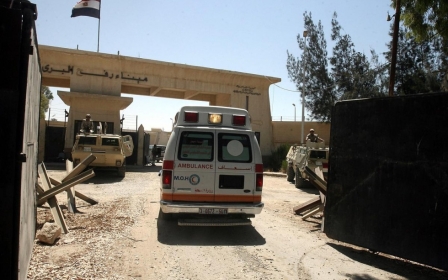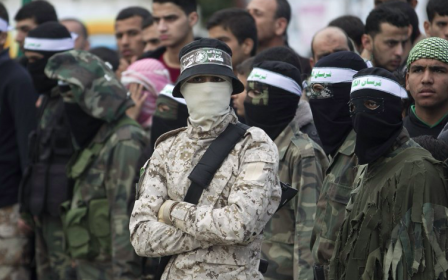The Gaza Strip among the ruins and rain

KHUZAA, Gaza Strip - Nothing has changed. Middle East Eye first spoke to Fareed al-Najjar late in 2014 after the 51-day war when the torrential rains began. Now they have come again and his situation is dire.
“We were told we'd only be living in these shipping containers for a few months, until we received replacement homes,” Najjar said. His neighbour interrupted: “They lied to us, and will leave us here forever.”
Elsewhere across the Gaza Strip, the roofs of several homes were recently blown off by the winter storms. Schools have been shut for two days and forecasters predict a new three-day storm will sweep the region with up to 80-kilometre winds starting Sunday night.
Fire department official Raed al-Dahsahn told MEE that 17 people had to be evacuated from their homes. Gaza municipalities have announced a state of emergency and staff members are expected to work around the clock.
Najjar’s house was one of about 100,000 homes destroyed or heavily damaged in the war that resulted in more than 2,200 people killed and tens of thousands injured and homeless. He has survived in a rusty, leaking shipping container that was damaged by the storms in 2014 and has now become unlivable.
Children and the elderly feel the cold the worst. With a lack of suitable footwear and appropriate seasonal, water-resistant clothing, they are not prepared to face a natural disaster or extreme weather. Amjad, a 10-year-old boy, stands by a large rain puddle inside his container and tells MEE he didn’t sleep the previous night because his father didn’t feel it was safe.
“The rain seeped into the [container] house during the night, my younger brother was crying and we don’t know how to keep warm or dry,” he said
Najjar said everything in his container is either damp or soaked and he is unable to fix the numerous leaks in the roof.
Rainwater has poured through, soaking the family mattresses and making sleep impossible. The leaks are getting worse, and flooding in the toilet area now presents a health risk.
“The question that no one seems able to answer,” a family elder said, “is when will they rebuild the homes that were taken from us? When will we have warm homes again?”
Remas Kafarneh, a six-year-old girl, said: “I only feel happy when I see the sun coming. But, when the sky darkens with clouds, I don’t feel safe.”
Her grandfather, Ahmed Kafarneh, said the metal floor of the container where they sleep was rusted and damaged. “The more we walk around, the more risky it becomes and we’re afraid the floor will collapse under us while we sleep.”
Kafarneh previously rented a flat but his money ran out, leaving him no option but the shipping containers.
“We have nothing left, just our appeals to anyone with a heart and conscience to listen to our pain and help our children,” he said.
Prior to the war, Kafarneh, his wife, son, daughter-in-law and grandchildren lived quietly in Khuzaa in a house he built after working for years in Israel.
“Then, in one moment, it was gone, all in ruins,” he said. “Now we are forgotten by the world, including our own Arab brothers and sisters.” He opened his hands in disbelief.
“The thing that really hurts me,” Kafarneh said, “is when my grandchild tells me, ‘Grandpa I am feeling cold.'”
Adding to their plight, Gaza’s power is often cut 12 to 16 hours a day.
“These containers were not made to be long-term homes,” he said. “They are not adequate for human beings.”
Still, he knows his words will only become text or soundbites that will soon disappear from public attention, and that he and his family must face the weather alone.
Middle East Eye propose une couverture et une analyse indépendantes et incomparables du Moyen-Orient, de l’Afrique du Nord et d’autres régions du monde. Pour en savoir plus sur la reprise de ce contenu et les frais qui s’appliquent, veuillez remplir ce formulaire [en anglais]. Pour en savoir plus sur MEE, cliquez ici [en anglais].





